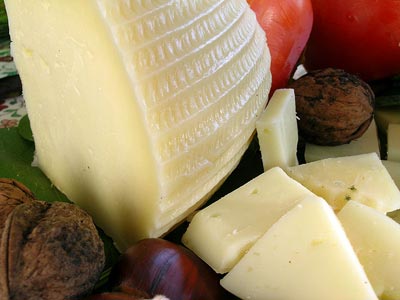
Due to its freshness, this cheese is produced almost everywhere and its name comes directly from the word “cheese”, a Latin term used up to the 19th century to indicate cheese. Caciotta is a soft cheese produced, generally, from ewe’s milk, but also from goat’s, cow’s or water buffalo’s milk, or even from mixed ewe’s and goat’s milk. The milk can be either raw or pasteurised; in the latter case, it is inoculated with milk enzymes.To induce coagulation, the milk is heated at 39°C (102°F) and liquid calf rennet is added. The curd is ready in about 35 minutes and cut to hazelnut-sized grains pieces with the aid of a “spino” (wooden stick) or “spannarola” (wood or metallic ladle). At this stage, the curd can be semi-cooked at 40-42°C (104-108°F) for 10-15 minutes if the cheese must undergo a long ageing process. On the other hand, the curd is allowed to settle for a few minutes and placed in moulds. It is then dried for 6-10 hours at 24-26°C (75-79°F) and 85% humidity; during this stage, the cheese is turned several times. Often, it is necessary to apply light pressing to favour draining. The cheese is then salted generally in brine, but some producers prefer dry salting.
|


